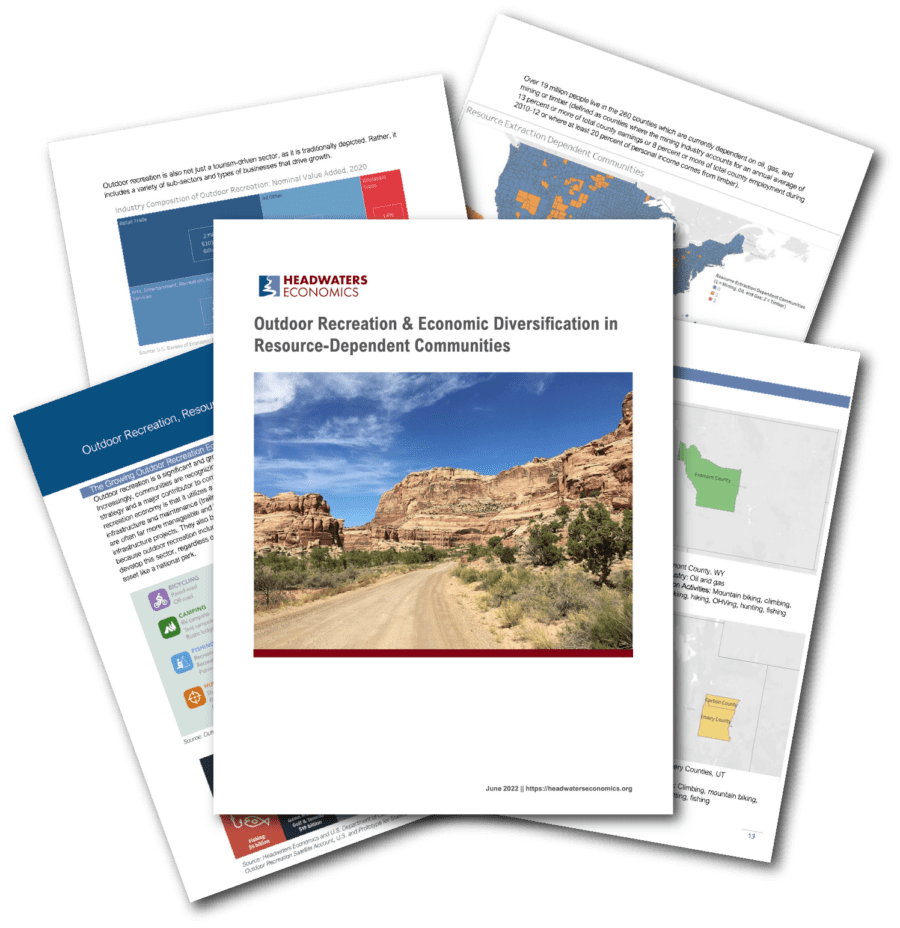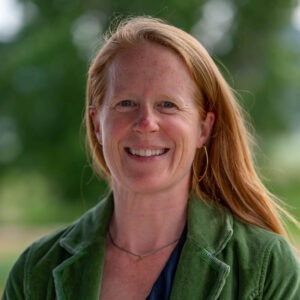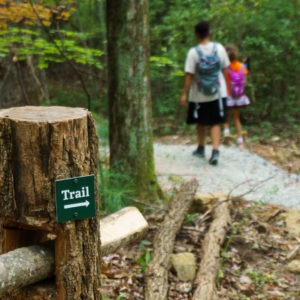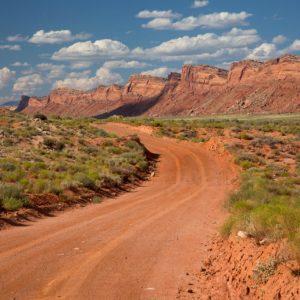Many communities across the United States that depend on natural resource extraction recognize the benefits of nurturing outdoor recreation to diversify their economies. In many cases, these communities find themselves with access to public lands, plentiful natural amenities, and proximity to other regional outdoor recreation hubs. Focusing economic development policy on these advantages can introduce new sources of revenue for businesses and local governments, as well as insulate against the boom-bust cycle that often characterizes natural resource extraction.
Yet there has been a lack of resources and strategies for many of these communities as they seek to build strong foundations for outdoor recreation. Headwaters Economics worked with Harvard University researcher Michael Tolan to examine communities that have had success. The research identifies lessons from how these communities addressed the challenge and how they came to balance their own community character with the growth that can come with increasing recreation opportunities. The results are detailed in a report: Outdoor Recreation, Resource Extraction, and Bridging the Gap.
Communities that made outdoor recreation work
The report examines how four communities have navigated the challenges of diversifying local economies to include outdoor recreation:
- Plumas County, CA, a community historically reliant on timber in Northern California.
- Fremont County, WY, a community historically reliant on coal, oil, and other mining in central Wyoming.
- Marquette County, MI, a community historically reliant on mining in the Upper Peninsula of Michigan.
- Emery and Carbon counties, UT, communities historically reliant on coal in southeastern Utah.
These communities each had differing levels of institutional capacity, unique challenges, and a range of natural amenities. They each took an expansive approach and emphasized how outdoor recreation can contribute to their local economies beyond tourism. They prioritized outdoor recreation policy that could compound local economic growth by fostering technology and innovation, manufacturing, and quality of life improvements aimed at attracting new residents as well as tourists.
Subscribe to our newsletter!
Communities can keep their character and achieve change
Nine strategies emerged from the research that extraction communities should consider as they seek to build a thriving, sustainable outdoor economy. While these recommendations do not encompass all the strategies available and do not guarantee success, they do provide a framework for economic diversification that compliments a community’s existing economic foundations.
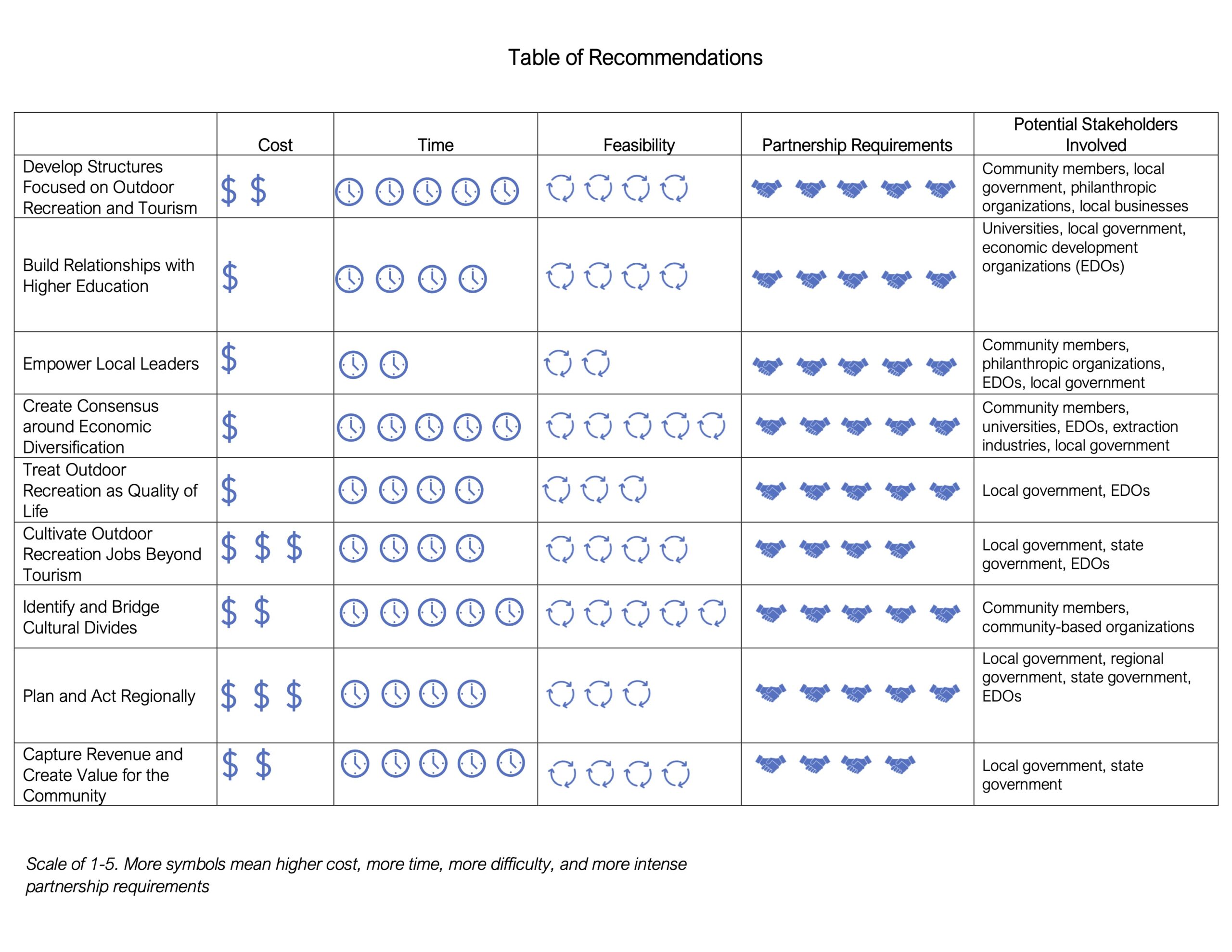
Each community profiled underscored the notion that diversification is change, and change is hard—economically, politically, and culturally. There are steps that communities can take to ease the process. They can create forums for active participation and facilitate interaction between groups that typically do not engage with one another. They can take inventory of their major assets—cultural, physical, and natural.
While building an outdoor recreation economy can help diversify jobs and revenue and add stability to counter the boom-bust cycle of natural resource extraction, it is not without drawbacks. The rapid growth that can accompany an amenity-based economy can put pressure on a community’s affordability, housing, infrastructure, and tax base. Communities working to build an outdoor recreation economy have a unique opportunity to be intentional about what the future should look like: how much they want to grow, what kind of jobs they want, and what kind of character they want to have.
Data Sources and Methods
This report focuses on four communities with historical dependencies on oil, coal, timber, and mining.
Communities were selected that:
- Lack proximity to a major recreation destination such as a national park or ski resort (to be most relevant to other communities, most of whom lack this type of asset).
- Are currently reliant on outdoor recreation as determined by the USDA county typology codes or have a strong reputation and commitment to growing an outdoor recreation economy.
- Represent a diversity of recreation activities, including tourism, gear and product manufacturing, outdoor access facilitators and other outdoor recreation sub-sectors.
- Have a historical or current dependence on extraction industries, including coal, mining, oil, timber, etc.
- Have varying levels of capacity and have made different levels of progress on their economic diversification efforts.
The author conducted 35 interviews over six months with mayors, state representatives, state offices of outdoor recreation, business owners, economic development organizations, and other community leaders to gather information about community assets, challenges, attitudes, and opportunities. Socioeconomic patterns and notable best practices were synthesized from interviews and a literature review.

GUEST CONTRIBUTOR
Michael Tolan
Michael Tolan conducted this research at Harvard Kennedy School in Cambridge, MA, in fulfillment of the requirements for a Master’s in Public Policy. He served as a research fellow with Headwaters Economics in 2022.

